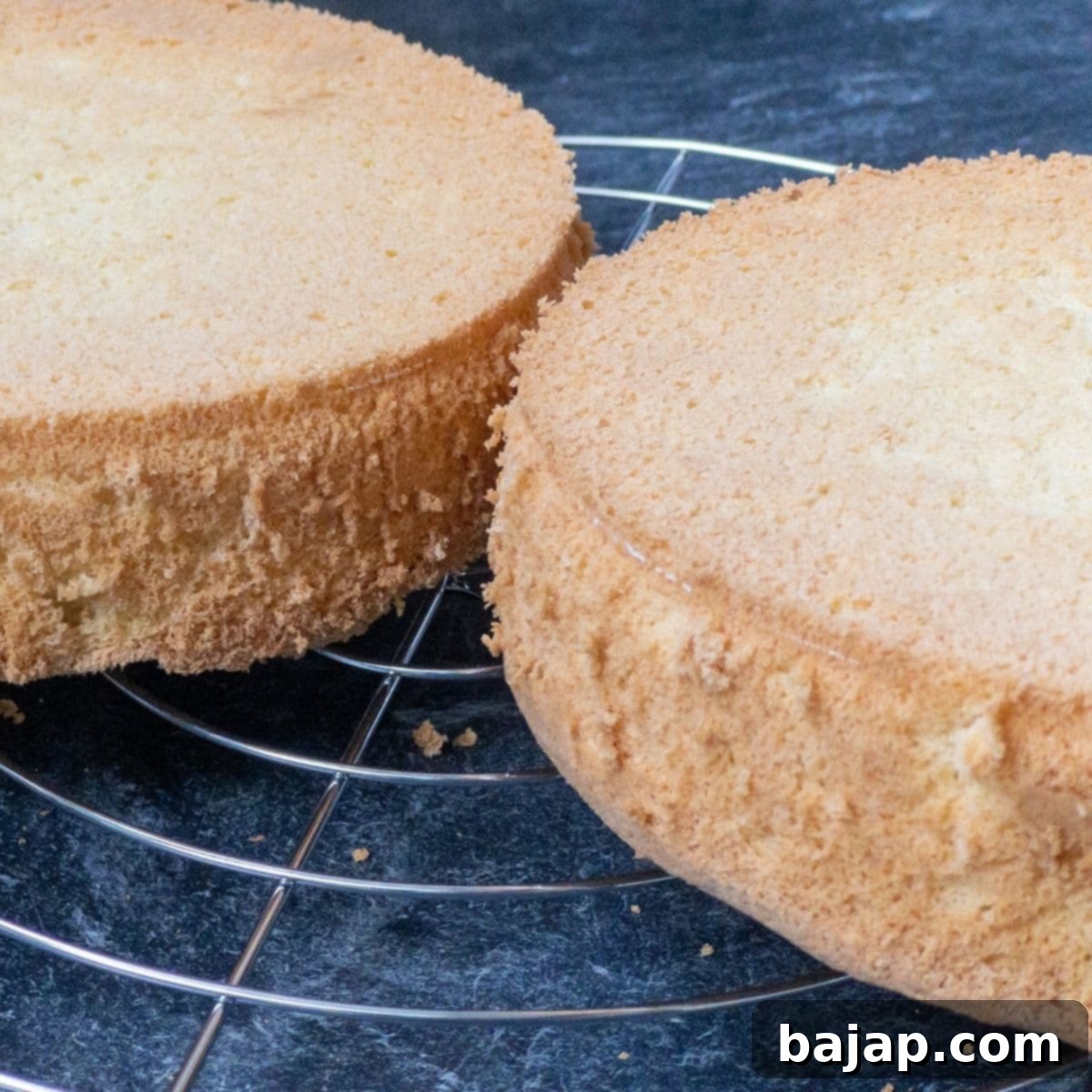The Ultimate Guide to Baking Light and Fluffy Viennese Sponge Cake Bases
Every home baker deserves a reliable, easy-to-follow recipe for a truly exceptional sponge cake. Look no further! This specific Viennese sponge cake recipe is incredibly simple to prepare, yet yields an astoundingly light, airy, and fluffy cake base every single time. Imagine creating the perfect foundation for your culinary masterpieces in under 45 minutes, using just four basic ingredients!
Having a versatile sponge cake recipe in your collection is an absolute game-changer. It opens up a world of dessert possibilities, from simple tea cakes to elaborate layered creations. Our Viennese sponge cake is not just easy; it’s a testament to classic Austrian baking, designed for consistent perfection.
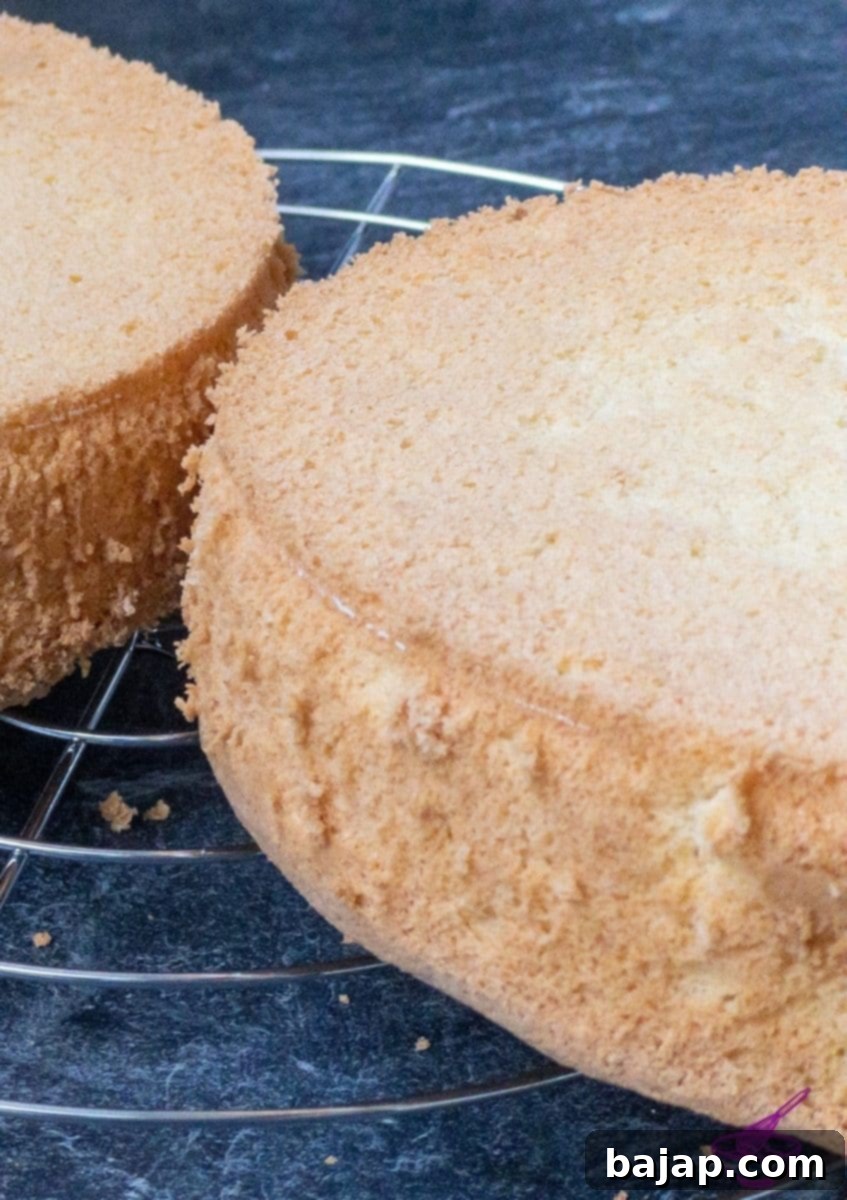
You will be absolutely delighted with this authentic Viennese sponge cake bases recipe! Originating from the heart of Austria, this method creates a sponge cake that is robust enough to provide excellent stability for multi-layered cakes, yet tender and moist enough to melt in your mouth. Its delicate structure makes it an ideal canvas for a variety of fillings. Picture it: layers generously filled with luscious creams, vibrant fruit jams, rich chocolates, or fresh, seasonal fruits. Just like our mouth-watering Austrian Strawberry Sponge Cake recipe, these bases are incredibly versatile!
As a proud Viennese myself, the name “Viennese Sponge Cake” holds a special place in my heart. It’s an honor to share this traditional Austrian recipe with you, bringing a piece of my culinary heritage into your kitchen. This post will not only guide you through creating the perfect sponge cake base effortlessly but also delve into what makes the Viennese sponge cake unique and how it differs from other popular sponge varieties.
If you’re eager to expand your baking repertoire with more essential pastry recipes, be sure to snag your exclusive free basic dough recipes guide below. It’s packed with foundational recipes that will elevate your home baking!
🥘 Essential Ingredients for Your Viennese Sponge Cake
Achieving a light and airy sponge cake relies on a few key ingredients, each playing a crucial role in the final texture and flavor. For this classic Viennese recipe, you’ll need only four simple items, but their quality and how they’re handled make all the difference.
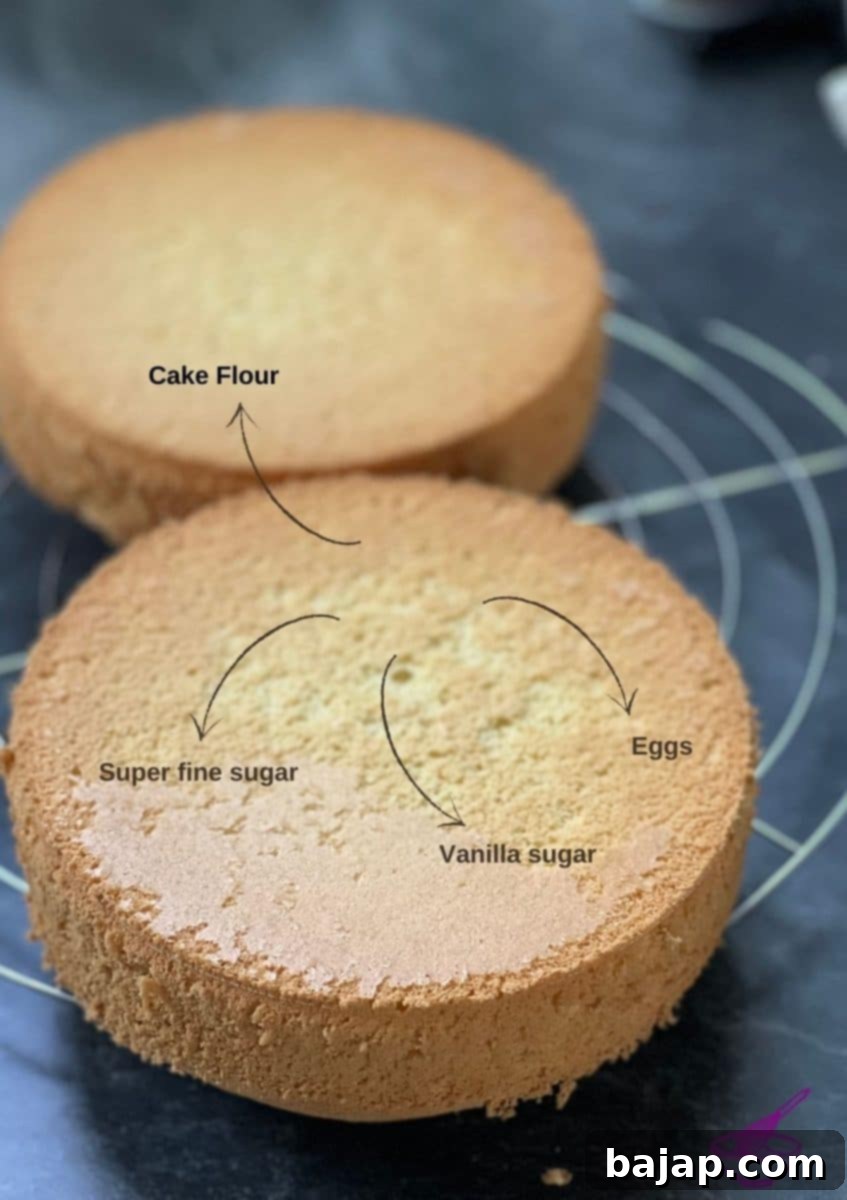
- Eggs – Medium-sized and at room temperature are ideal. Using free-range eggs often results in a richer color and flavor. Separating them is key to achieving that signature volume.
- Cake flour – Unlike all-purpose flour, cake flour has a lower protein content, which is essential for creating a tender, fine crumb in sponge cakes. Sifting it multiple times helps to aerate it and prevent lumps.
- Vanilla sugar – This traditional Austrian ingredient adds a delicate vanilla aroma without overpowering the natural flavor of the cake. I do not recommend using bourbon vanilla sugar for this recipe, as its stronger flavor and darker hue can alter the desired light color and subtle taste of the Viennese sponge.
- Superfine sugar – Also known as caster sugar, its fine granules dissolve more quickly into the egg mixtures, creating a smoother, more stable foam that contributes to the cake’s light texture.
For precise measurements, please refer to the comprehensive recipe card provided below.
🔪 Step-by-Step Instructions for Perfect Viennese Sponge Cake Bases
Follow these detailed steps closely to ensure your Viennese sponge cake bases turn out perfectly light, airy, and ready for your favorite fillings. Precision and gentle handling are key to this recipe’s success.
Step 1: Preparation is Key
Before you even think about mixing, preheat your oven to 180 °C (356 °F) using top/bottom heat. This ensures the oven is at the correct temperature when your batter is ready, crucial for an even rise. Next, meticulously separate your six medium-sized eggs into two distinct, deep bowls. Deep bowls are essential here, especially for the egg whites, as they will significantly increase in volume when whipped. A bowl that’s too small will lead to an inconvenient overflow, disrupting your baking process. For the egg yolks, a large mixing bowl is recommended, as this is where all the components will eventually come together, requiring ample space. Taking these preparatory steps ensures a smooth and successful baking experience from start to finish.
Step 2: Whipping the Yolks and Whites Separately
Begin with the egg yolks. Add half of the superfine sugar and all of the vanilla sugar to the bowl of yolks. Using an electric mixer, beat this mixture until it becomes very fluffy, pale yellow, and thick, often described as reaching the “ribbon stage” (where the mixture leaves a trail when drizzled from the beater). Set this bowl aside. Now, it’s crucial to thoroughly wash and dry your mixer beaters before moving to the egg whites. Even a tiny bit of fat or moisture can prevent egg whites from whipping properly. To the clean bowl of egg whites, add the remaining superfine sugar. Beat the egg whites with the electric mixer until they form very stiff, glossy peaks. When you lift the beaters, the peaks should stand firm and not collapse. This meringue-like consistency is vital for the sponge’s structure and lift.
Step 3: Gently Combining the Mixtures
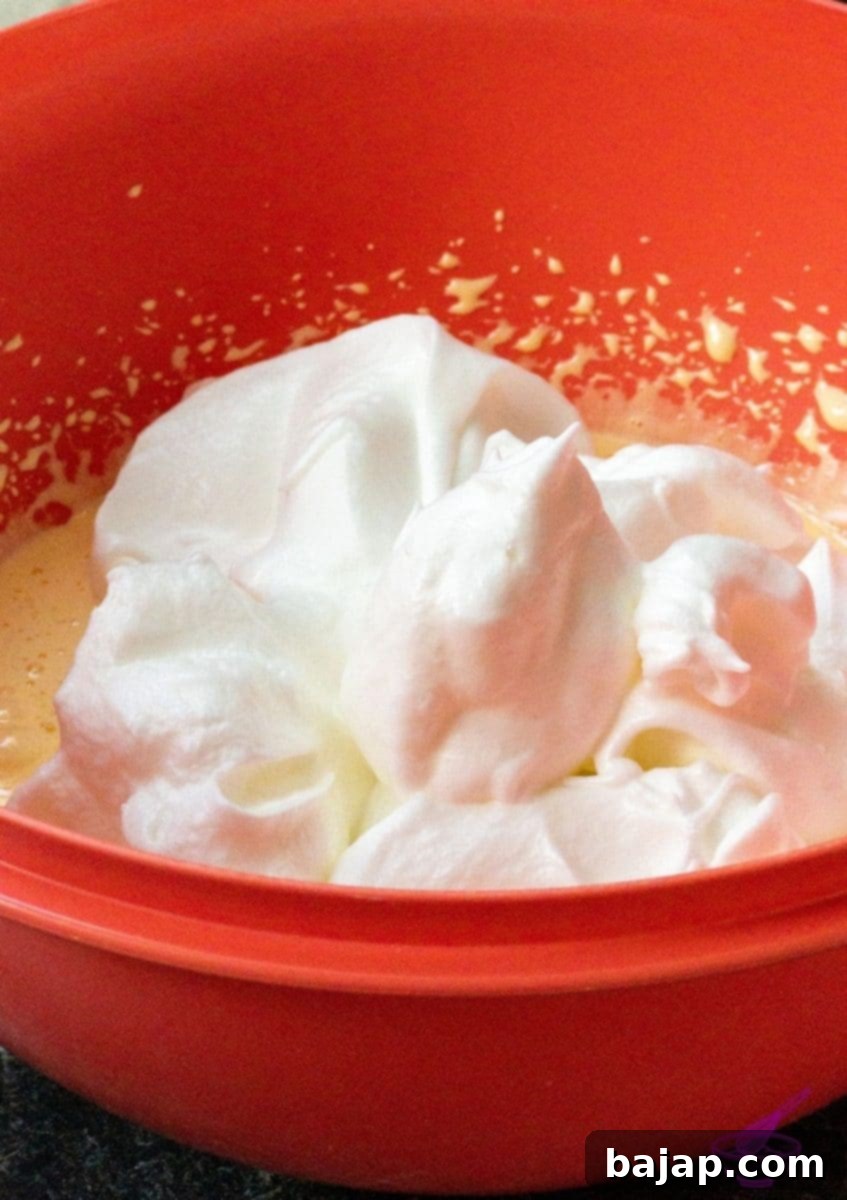
This is a critical step that ensures the lightness of your sponge cake. Carefully, using a large spatula, fold the stiffly beaten egg whites into the mixing bowl containing the beaten egg yolk mixture. The goal is to incorporate them without deflating the air you’ve worked so hard to create. Use a gentle, lifting motion from the bottom to the top. Once largely combined, sift the cake flour directly over the mixture. Sifting ensures the flour is evenly distributed and light. Continue to gently fold until the flour is just incorporated and no streaks remain. Overmixing at this stage will develop the gluten in the flour, resulting in a tougher cake, so be mindful and stop as soon as it’s combined.
Step 4: Baking and Cooling Your Sponge Bases
With your airy batter ready, evenly distribute it into your prepared springform pans, filling them about three-quarters full. This allows room for the cake to rise without overflowing. Immediately place the filled springform pans into your preheated oven on the middle shelf. Bake for approximately 30 minutes. Baking time can vary slightly depending on your oven, so keep an eye on them. To test for doneness, gently insert a long wooden toothpick into the center of the sponge. If it comes out clean with no wet batter clinging to it, your cake is ready. Promptly remove the springform pan(s) from the oven and allow them to cool on a wire rack for about 15 minutes. Before attempting to open the springform pan, run a sharp knife carefully along the inner edge of the pan. This prevents any potential sticking and ensures a clean release of your perfectly baked sponge cake.
Step 5: Preparing Your Cake Layers
Once the sponge cake has cooled sufficiently and is no longer warm to the touch, carefully remove it from the springform pan and transfer it to a cooling rack to cool completely. This prevents the bottom from becoming soggy. Once fully cooled, take the first sponge cake and carefully cut it horizontally in half, creating two layers. Repeat this process with the second sponge cake. I find that a long, serrated bread knife works wonderfully for this task. The fluffy texture of the sponge requires a gentle “sawing” motion rather than pushing the blade straight through. Applying too much force will tear and fray the delicate cake. If you happen to have a cake leveler at home, it can be a fantastic tool for achieving perfectly even layers.
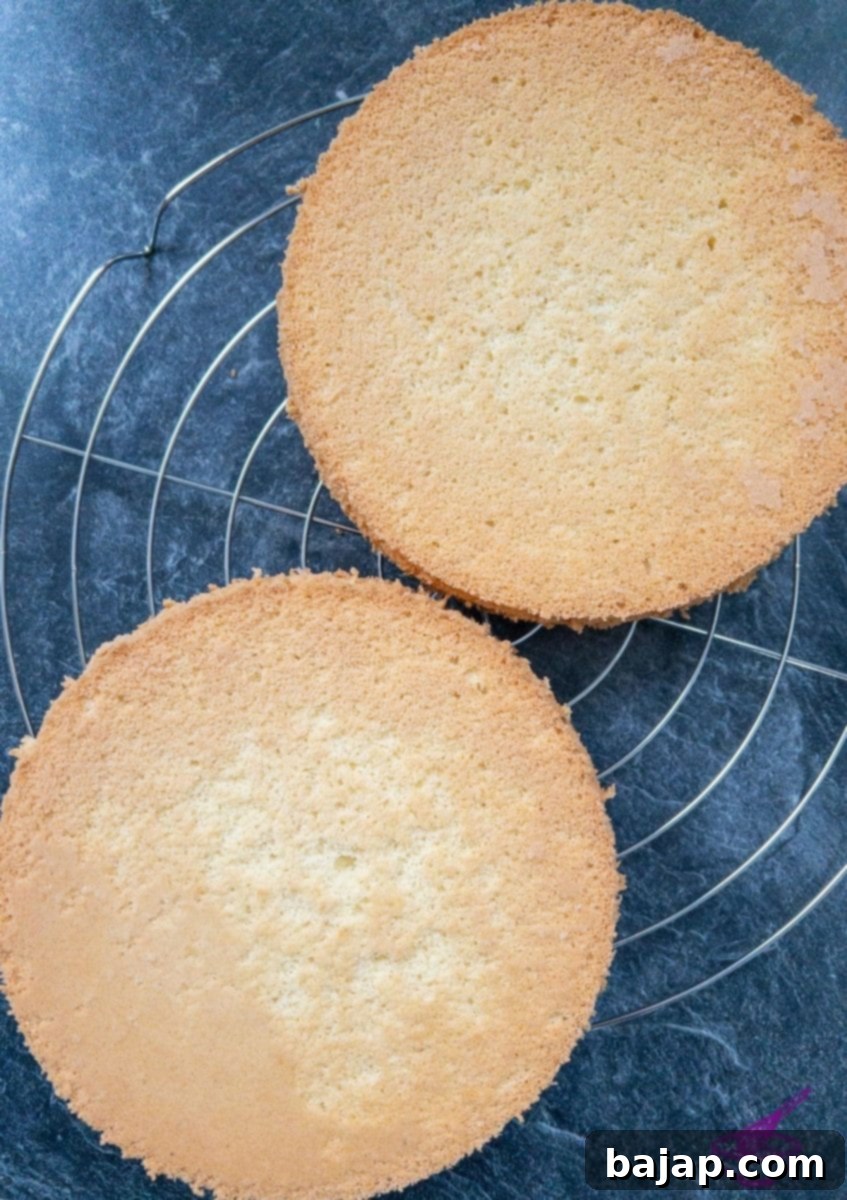
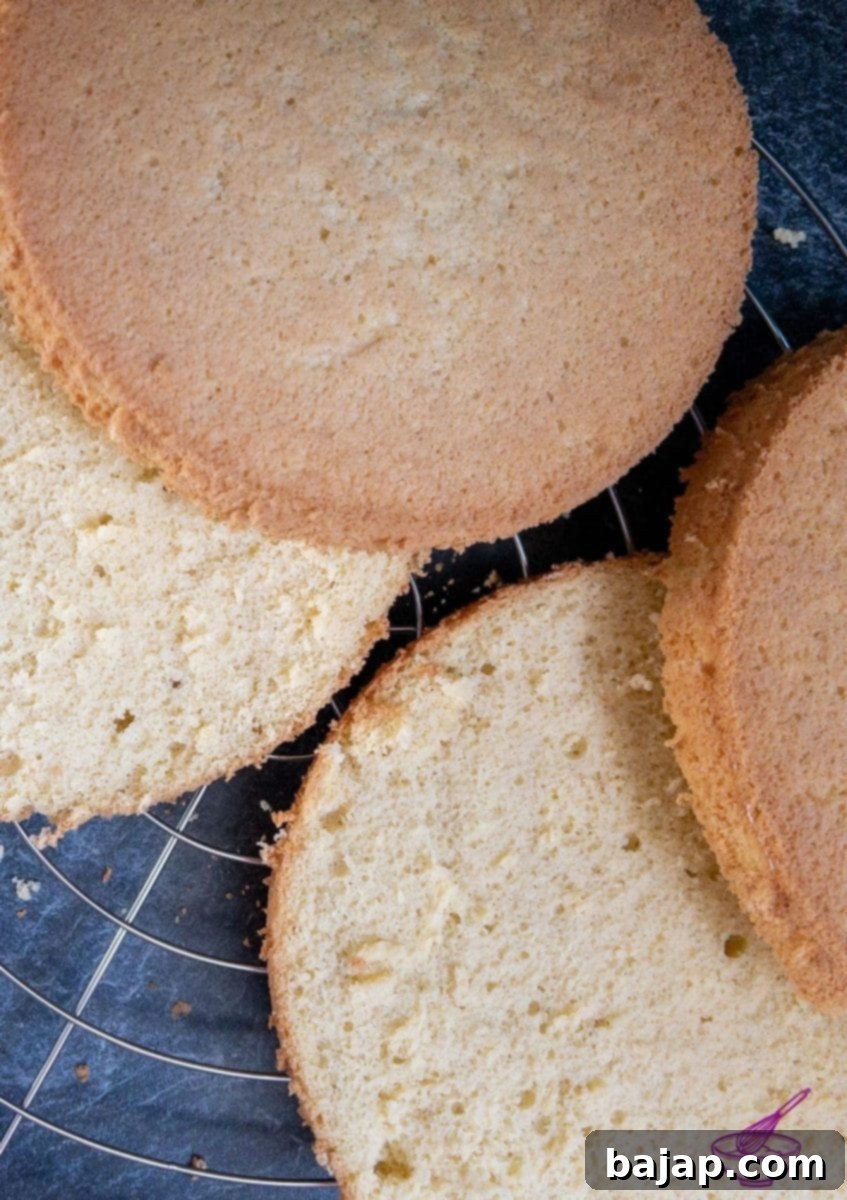
Voilà! You have now successfully created four perfect sponge cake bases. With these beautiful, light, and airy layers, you are fully equipped to transform them into a truly fabulous and unforgettable cake! Let your creativity soar!
Much like the delightful Austrian strawberry sponge cake recipe, you can lavishly fill these bases with freshly whipped cream and an abundance of sweet, juicy fruits. Alternatively, spread the cake bases with your favorite jam and then generously stuff the cake with any type of rich buttercream, topping it off with elegant icing or decorative fondant. The possibilities are truly endless, and you have complete freedom to let your imagination run wild and create a dessert that is uniquely yours!
Enjoy your magnificent creation!
Exploring Different Types of Sponge Cakes: A Comparative Look
While often used interchangeably, not all sponge cakes are created equal. Different techniques and ingredients yield distinct textures and uses. Understanding these variations will broaden your baking horizons and help you choose the perfect sponge for any dessert.
Viennese Sponge Cake (Biskuitteig)
- The Viennese sponge cake, or Biskuitteig, is characterized by its method of preparing eggs. It uses both egg whites and yolks, but they are meticulously separated and whipped independently. The yolks are beaten with sugar until pale and fluffy, while the whites are whipped into stiff, voluminous peaks. These are then gently folded together, creating an exceptionally light, tender, and somewhat firm crumb, making it ideal for layered cakes that require stability.
Genovese Sponge Cake or Yellow Cake (Génoise)
- The Genovese sponge cake, also known as Génoise, distinguishes itself by using whole eggs (without separation). The eggs and sugar are warmed over a bain-marie (hot water bath) and then beaten vigorously until they are very thick and pale, resembling a ribbon stage. This warming helps create extra volume. Flour is then folded in. Génoise cakes tend to be slightly denser than Viennese sponges but are still very tender. They are best suited for delicate shortcakes, roll cakes (roulades), and as a base for elaborate pastries that might be brushed with syrup. Check out this delicious honey bun cake, a gorgeous variety made with cream cheese!
Angel Food Cake
- The defining characteristic of an Angel Food Cake is its pristine white color and exceptionally light, airy texture. This is achieved through the exclusive use of egg whites, with no egg yolks or fat whatsoever. The whipped egg whites provide all the leavening, resulting in a cake that is almost cloud-like. It is typically baked in a tube pan and cooled upside down. While remarkably light, it does tend to have a slightly drier texture due to the absence of fat.
Chiffon Cake
- A Chiffon Cake is a delightful hybrid, blending the richness of an oil cake with the lightness of a sponge cake. Its unique texture comes from incorporating vegetable oil and baking powder into the batter, alongside separated eggs. The egg yolks are mixed with the wet ingredients and oil, while the egg whites are whipped separately and folded in. This results in a cake that is incredibly moist, rich, yet still wonderfully light and tender, often used for elaborate layer cakes and often flavored with citrus or chocolate.
🍽 Essential Baking Equipment
Having the right tools can make your baking experience smoother and more enjoyable. Here’s what you’ll need to create these fantastic Viennese sponge cake bases:
- Mixing bowls: You’ll need at least two deep bowls for separating and whipping the egg whites and yolks, plus a larger one for combining.
- Electric hand mixer or kitchen machine: Crucial for whipping the eggs to the perfect consistency quickly and efficiently.
- Close-meshed sieve: Essential for sifting flour and ensuring a lump-free, aerated batter, which contributes to the cake’s lightness.
- Springform pans – 9-inch diameter is standard for this recipe, allowing for a good rise and easy removal. Having two pans allows you to bake both cakes simultaneously for efficiency.
- Cooling rack: Allows air to circulate around the cake as it cools, preventing sogginess and ensuring an even texture.
- Bread knife or cake leveler: A long, serrated bread knife is excellent for cleanly slicing the cooled sponge into even layers. A cake leveler offers an even more precise and effortless way to achieve perfectly level layers.
💭 Pro Baker’s Tip: The Secret to a Sky-High Sponge!
To ensure your sponge cake rises to its full, glorious potential, there’s one crucial rule: **do NOT grease your springform pan with butter or any fat.** This might seem counterintuitive for baking, but for sponge cakes, it’s absolutely vital.
If you mistakenly grease the sides of your springform pan, the delicate sponge cake batter will not have the necessary “grip” to climb up the edges of the pan as it bakes. This adherence to the ungreased sides is what allows the cake to achieve maximum height and a beautiful, even rise. Instead of a tall, airy cake, you’ll end up with a denser, flatter sponge. For best results, line the bottom of your springform pan with parchment paper, but leave the sides completely ungreased. This simple tip is a game-changer for sponge cake success!
If you try this recipe, I would absolutely love to hear from you! Please let me know how you liked it by giving it a ★★★★★ star rating and leaving a comment below. Your feedback is truly invaluable and helps others discover delicious recipes! You can also sign up for our Newsletter to receive weekly homemade recipe inspirations, or follow me on Pinterest or Instagram. Don’t forget to share your wonderful creations with me by tagging @combinegoodflavors and using the hashtag #combinegoodflavors, so I don’t miss seeing your baking triumphs!
📖 Recipe: Best Viennese Sponge Cake Bases
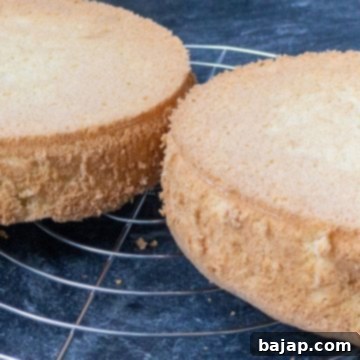
Best Viennese Sponge Cake Bases Recipe
By Nora
Prevent your screen from going dark
Save Recipe
Saved!
Pin Recipe
15 minutes
30 minutes
45 minutes
Cake
Austrian
4 Cake Bases
337 kcal
Equipment
-
Mixing bowls
-
Electric Handmixer
-
Close meshed sieve
-
2 9-Inch Springform Pan
-
Cooling Rack
-
Bread knife or Cake leveler
Ingredients
- 6 Egg yolks
- 6 Egg whites
- ½ cup Superfine sugar divided
- ¾ tablespoon Vanilla Sugar
- 1 cup Cake Flour
Instructions
-
Preheat your oven to 180 °C // 356 °F (top/bottom heat). Separate the six eggs into two separate, deep bowls.
-
In the egg yolk bowl, add half of the superfine sugar and all of the vanilla sugar. Beat with an electric mixer until very foamy, pale, and thick (ribbon stage). Set aside.½ cup Superfine sugar, ¾ tablespoon Vanilla Sugar, 6 Egg yolks
-
Clean and dry the beaters. In the egg white bowl, add the second half of the superfine sugar. Beat until very stiff, glossy peaks form.6 Egg whites, ½ cup Superfine sugar
-
Gently fold the stiffly beaten egg whites into the beaten egg yolk mixture. Then sift the cake flour over it and carefully fold until just combined. Avoid overmixing.1 cup Cake Flour
-
Divide the batter evenly into ungreased springform pans (about three-quarters full) and immediately place them in the preheated oven.
-
Bake on the middle shelf for 30 minutes. Test for doneness by inserting a wooden toothpick; it should come out clean.
-
Remove the springform pan(s) from the oven and let cool for 15 minutes.
-
Before opening the springform, cut along the edge once with a sharp knife to ensure no dough sticks to the sides.
-
Remove the cake from the springform pan and let it cool completely on a cooling rack.
-
Once cool, use a serrated bread knife (or cake leveler) to carefully cut each sponge cake horizontally into two even layers.
Never miss a recipe!
Sign up and let me spoil you weekly with a delicious homemade recipe!
Austrian recipe, cake bases, cake layers, no butter cake, short cake, sponge dough, sponge dough for cake layers, Viennese Sponge Cake Bases
Like this recipe?
Mention @combinegoodflavors or tag #combinegoodflavors!
Nutrition values are estimates only, using online calculators. Please verify using your own data.
Serving: 1Cake Base
|
Calories: 337kcal
|
Carbohydrates: 56g
|
Protein: 12g
|
Fat: 7g
|
Saturated Fat: 2g
|
Polyunsaturated Fat: 1g
|
Monounsaturated Fat: 2g
|
Trans Fat: 1g
|
Cholesterol: 246mg
|
Sodium: 95mg
|
Potassium: 124mg
|
Fiber: 1g
|
Sugar: 33g
|
Vitamin A: 357IU
|
Calcium: 42mg
|
Iron: 1mg

⛑ Food Safety Guidelines for Baking
Ensuring food safety is paramount when cooking and baking. Adhere to these essential guidelines to prevent foodborne illnesses and maintain a hygienic kitchen environment:
- Minimum Cooking Temperatures: Always cook foods, especially those containing eggs, to a minimum internal temperature of 165 °F (74 °C) to eliminate harmful bacteria.
- Prevent Cross-Contamination: Never use the same utensils, cutting boards, or dishes on cooked food that previously touched raw ingredients like meat or eggs without thorough cleaning.
- Hand Hygiene: Wash your hands thoroughly with soap and warm water before handling food and immediately after touching raw meat or eggs.
- Temperature Control: Do not leave perishable food sitting out at room temperature for extended periods. Refrigerate promptly to slow bacterial growth.
- Unattended Cooking: Never leave cooking food unattended. This can lead to overcooking, burning, or even fires.
- High Smoke Point Oils: When cooking with oils, choose those with a high smoke point to avoid the formation of harmful compounds and off-flavors.
- Ventilation with Gas Stoves: Always ensure good ventilation when using a gas stove to disperse pollutants and maintain indoor air quality.
For more detailed information and comprehensive guidelines on safe food handling and preparation, please visit USDA.gov.
